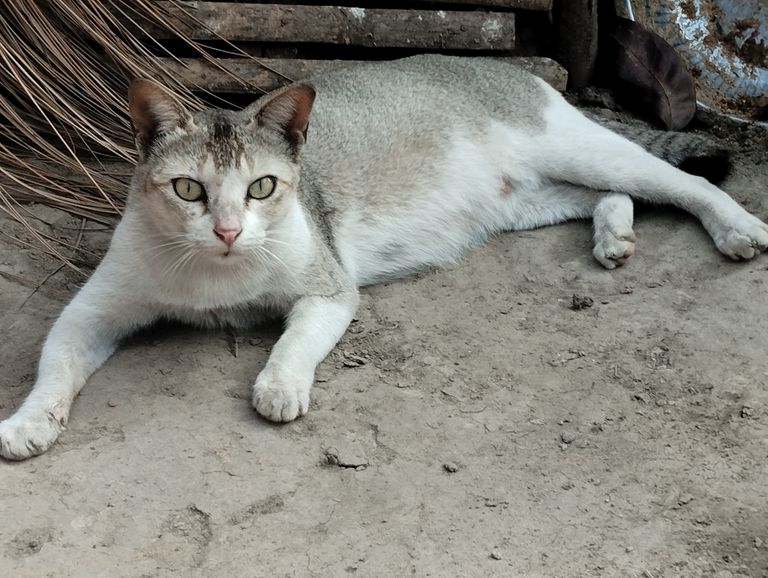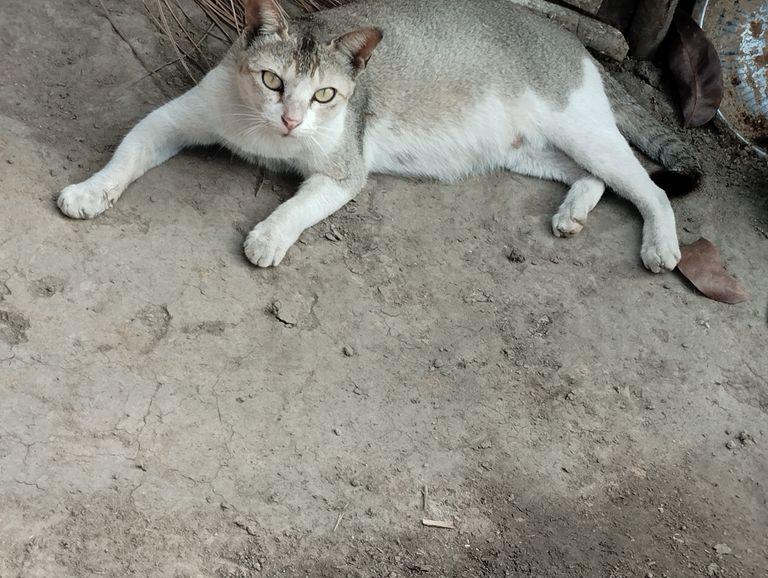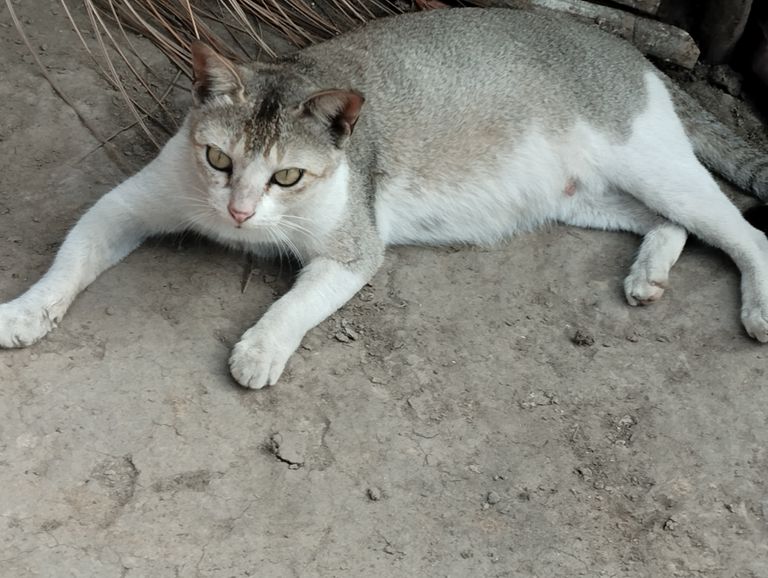
The Ultimate Guide to Keeping Cats as Pets.
Cats are one of the most popular pets worldwide, loved for their independent yet affectionate nature. If you’re considering getting a cat or already have one, this guide will help you provide the best care for your feline friend. From choosing the right cat to ensuring their health and happiness, here’s everything you need to know about keeping cats as pets.
Choosing the Right Cat
Before bringing a cat home, consider whether you want a kitten or an adult cat. Kittens require more attention and training, while adult cats may already be house-trained and have an established temperament. Additionally, decide whether you prefer a specific breed or are open to adopting a mixed-breed cat.
Preparing Your Home for a Cat
Creating a cat-friendly environment is crucial for their well-being. Ensure your home has:
A comfortable sleeping area
A litter box placed in a quiet, accessible spot
Scratching posts to prevent furniture damage
Safe hiding spots for privacy
Interactive toys for mental stimulation
Feeding Your Cat
A cat’s diet is essential for its health. Provide high-quality cat food that meets their nutritional needs. Here are some tips:
Kittens require more frequent meals with balanced nutrients
Adult cats can be fed twice a day
Ensure fresh water is always available
Avoid feeding them toxic foods like chocolate, onions, and garlic
Grooming and Hygiene
Cats are generally clean animals, but they still need some grooming assistance:
Brush their fur regularly to reduce shedding and prevent hairballs
Trim their nails to prevent injuries
Clean their ears and check for infections
Maintain dental hygiene with cat-friendly toothbrushes
Healthcare and Vaccinations
Regular vet visits are essential for a cat’s health. Keep up with:
Vaccinations against common feline diseases
Flea and parasite control
Spaying or neutering to prevent unwanted litters and health issues
Routine check-ups to monitor overall well-being
Training and Behavior
Understanding cat behavior can strengthen your bond with them. Here’s how to train your cat effectively:
Use positive reinforcement, such as treats and praise
Train them to use a litter box
Discourage bad behavior like scratching furniture by using scratching posts
Provide interactive playtime to prevent boredom
Socialization and Companionship
While cats are independent, they still need social interaction. Spend quality time with your cat by playing, petting, and talking to them. If you have multiple cats, ensure they get along by introducing them gradually.
Ensuring a Safe Environment
Keep your cat safe indoors by:
Securing windows and balconies to prevent falls
Keeping toxic plants and chemicals out of reach
Providing them with a safe outdoor enclosure if they like fresh air
Conclusion
Keeping a cat as a pet can be a rewarding experience. With proper care, nutrition, and love, your feline friend will lead a happy and healthy life. Whether you’re a first-time cat owner or a seasoned pet parent, following these guidelines will help you create a nurturing environment for your beloved cat.
I’ve created a detailed blog on keeping cats as pets. Let me know if you’d like any adjustments or additional details.

The Ultimate Guide to Cat Food: Choosing the Best Diet for Your Feline Friend
Cats are beloved pets that require a balanced and nutritious diet to thrive. Whether you're a new cat owner or a seasoned pet parent, understanding the different types of cat food and their benefits is essential for your feline’s health. In this comprehensive guide, we will explore the various types of cat food, key ingredients to look for, and tips for maintaining a well-balanced diet for your furry friend.
Types of Cat Food
Cat food is available in different forms, each offering unique benefits. The most common types include:
- Dry Cat Food (Kibble)
Dry cat food is a popular choice due to its convenience, affordability, and long shelf life. It helps keep a cat’s teeth clean by reducing plaque buildup. However, some dry foods may contain high amounts of carbohydrates, which can contribute to obesity if not portioned correctly.
- Wet Cat Food (Canned)
Wet cat food contains high moisture content, making it an excellent option for cats that do not drink enough water. It is rich in protein and offers a taste that most cats love. However, canned food is more expensive than dry food and has a shorter shelf life once opened.
- Raw Cat Food
Raw diets, including raw meat, organs, and bones, aim to mimic a cat’s natural diet in the wild. Advocates argue that raw feeding enhances coat health, improves digestion, and increases energy levels. However, handling raw food requires proper storage and hygiene to prevent bacterial contamination.
- Freeze-Dried and Dehydrated Cat Food
These options retain most nutrients from raw ingredients while being shelf-stable. They require rehydration before feeding and offer the benefits of a raw diet without the risks of bacterial contamination.
- Homemade Cat Food
Some pet owners prefer preparing their cat’s meals at home. While this can be a healthy option, it requires careful planning to ensure the right balance of protein, fats, vitamins, and minerals. Consultation with a veterinarian or pet nutritionist is recommended.
Key Ingredients to Look for in Cat Food
When selecting cat food, consider the following essential ingredients:
High-Quality Protein – Cats are obligate carnivores and require animal-based proteins such as chicken, turkey, beef, fish, or lamb.
Healthy Fats – Fats like omega-3 and omega-6 fatty acids support healthy skin, coat, and brain function.
Essential Vitamins and Minerals – Taurine, calcium, phosphorus, and vitamin A are crucial for overall health.
Low Carbohydrates – Unlike dogs, cats do not require high amounts of carbohydrates. Choose foods with minimal fillers like corn, wheat, or soy.
Moisture Content – Since cats have a low thirst drive, foods with higher moisture content help prevent dehydration and urinary tract issues.
Tips for Maintaining a Healthy Cat Diet
Follow Feeding Guidelines – Overfeeding can lead to obesity, while underfeeding can result in malnutrition. Check portion recommendations on the food label.
Provide Fresh Water – Ensure your cat has access to clean water at all times to promote hydration.
Gradual Diet Changes – If switching cat food brands or types, transition gradually over a week to avoid digestive upset.
Monitor Your Cat’s Weight and Health – Regularly check your cat’s weight and watch for signs of allergies, digestive issues, or changes in appetite.
Consult a Veterinarian – Your vet can recommend the best diet based on your cat’s age, breed, and health condition.
Conclusion
Choosing the right food for your cat is crucial for its health and longevity. By understanding different types of cat food, essential ingredients, and proper feeding habits, you can ensure that your feline friend enjoys a balanced and nutritious diet. Always prioritize high-quality ingredients and consult a veterinarian if you have any concerns about your cat’s diet. A well-fed cat is a happy and healthy companion!
I've created a detailed blog about cat food, covering types, key ingredients, and tips for a healthy diet. Let me know if you'd like any modifications or additional details.

The Benefits of Keeping a Cat
Cats have been cherished companions for humans for centuries. They provide more than just companionship; they offer several benefits that contribute to our well-being. Whether you are a pet lover or considering adopting a cat, understanding these advantages can help you make an informed decision. Let’s explore some of the key benefits of keeping a cat.
- Stress Reduction and Emotional Support
One of the most significant benefits of keeping a cat is the emotional support they provide. The simple act of petting a cat can release endorphins, which help reduce stress and anxiety. Their gentle purring has a calming effect, often compared to a form of therapy. Many people find solace in their feline friends, especially in times of loneliness or emotional distress.
- Improved Heart Health
Studies have shown that owning a cat can lead to a healthier heart. The companionship of a cat can lower blood pressure and reduce the risk of heart disease and stroke. The soothing nature of a cat’s presence helps maintain a relaxed state, ultimately benefiting cardiovascular health.
- Pest Control
Cats are natural hunters, and their instinct to chase and catch pests makes them excellent for keeping rodents and insects at bay. Even the mere presence of a cat in a household can deter pests from entering, making them valuable for maintaining a clean and pest-free home.
- Encouraging Responsibility
For families with children, having a cat can be a great way to teach responsibility. Feeding, grooming, and cleaning up after a pet instill a sense of duty and care in children. This can help develop positive habits that extend to other areas of life.
- Social Benefits
Owning a cat can also improve social interactions. Cat owners often share a bond with fellow pet lovers, leading to conversations and friendships. Additionally, posting cat-related content on social media can spark connections with like-minded individuals.
- Low Maintenance Pets
Compared to other pets, cats require relatively low maintenance. They are independent animals that groom themselves and do not need frequent baths. Unlike dogs, they do not require daily walks, making them suitable for busy individuals or those living in small apartments.
- Therapeutic Benefits
Cats are often used in therapy due to their calming nature. They provide emotional support for people suffering from mental health conditions like depression and anxiety. Their presence can uplift moods and provide a sense of comfort.
- Enhancing Home Atmosphere
A cat’s playful antics and affectionate nature can bring joy and warmth to any home. Their presence creates a cozy environment, making a house feel more like a home. Watching a cat play, chase toys, or simply curl up in a cozy spot can be incredibly heartwarming.
Conclusion
Keeping a cat is more than just having a pet; it is about having a loyal and loving companion that enhances overall well-being. From reducing stress to improving heart health and providing pest control, cats offer numerous benefits that enrich our lives. If you are considering adopting a pet, a cat might just be the perfect choice for you.
I've created a blog on the benefits of keeping a cat. Let me know if you need any modifications or additions.

The Benefits of Keeping a Cat
Cats have been cherished companions for humans for centuries. They provide more than just companionship; they offer several benefits that contribute to our well-being. Whether you are a pet lover or considering adopting a cat, understanding these advantages can help you make an informed decision. Let’s explore some of the key benefits of keeping a cat.
- Stress Reduction and Emotional Support
One of the most significant benefits of keeping a cat is the emotional support they provide. The simple act of petting a cat can release endorphins, which help reduce stress and anxiety. Their gentle purring has a calming effect, often compared to a form of therapy. Many people find solace in their feline friends, especially in times of loneliness or emotional distress.
- Improved Heart Health
Studies have shown that owning a cat can lead to a healthier heart. The companionship of a cat can lower blood pressure and reduce the risk of heart disease and stroke. The soothing nature of a cat’s presence helps maintain a relaxed state, ultimately benefiting cardiovascular health.
- Pest Control
Cats are natural hunters, and their instinct to chase and catch pests makes them excellent for keeping rodents and insects at bay. Even the mere presence of a cat in a household can deter pests from entering, making them valuable for maintaining a clean and pest-free home.
- Encouraging Responsibility
For families with children, having a cat can be a great way to teach responsibility. Feeding, grooming, and cleaning up after a pet instill a sense of duty and care in children. This can help develop positive habits that extend to other areas of life.
- Social Benefits
Owning a cat can also improve social interactions. Cat owners often share a bond with fellow pet lovers, leading to conversations and friendships. Additionally, posting cat-related content on social media can spark connections with like-minded individuals.
- Low Maintenance Pets
Compared to other pets, cats require relatively low maintenance. They are independent animals that groom themselves and do not need frequent baths. Unlike dogs, they do not require daily walks, making them suitable for busy individuals or those living in small apartments.
- Therapeutic Benefits
Cats are often used in therapy due to their calming nature. They provide emotional support for people suffering from mental health conditions like depression and anxiety. Their presence can uplift moods and provide a sense of comfort.
- Enhancing Home Atmosphere
A cat’s playful antics and affectionate nature can bring joy and warmth to any home. Their presence creates a cozy environment, making a house feel more like a home. Watching a cat play, chase toys, or simply curl up in a cozy spot can be incredibly heartwarming.
Conclusion
Keeping a cat is more than just having a pet; it is about having a loyal and loving companion that enhances overall well-being. From reducing stress to improving heart health and providing pest control, cats offer numerous benefits that enrich our lives. If you are considering adopting a pet, a cat might just be the perfect choice for you.
I've created a blog on the benefits of keeping a cat. Let me know if you need any modifications or additions.
The Benefits of Keeping a Cat
Cats have been cherished companions for humans for centuries. They provide more than just companionship; they offer several benefits that contribute to our well-being. Whether you are a pet lover or considering adopting a cat, understanding these advantages can help you make an informed decision. Let’s explore some of the key benefits of keeping a cat.
- Stress Reduction and Emotional Support
One of the most significant benefits of keeping a cat is the emotional support they provide. The simple act of petting a cat can release endorphins, which help reduce stress and anxiety. Their gentle purring has a calming effect, often compared to a form of therapy. Many people find solace in their feline friends, especially in times of loneliness or emotional distress.
- Improved Heart Health
Studies have shown that owning a cat can lead to a healthier heart. The companionship of a cat can lower blood pressure and reduce the risk of heart disease and stroke. The soothing nature of a cat’s presence helps maintain a relaxed state, ultimately benefiting cardiovascular health.
- Pest Control
Cats are natural hunters, and their instinct to chase and catch pests makes them excellent for keeping rodents and insects at bay. Even the mere presence of a cat in a household can deter pests from entering, making them valuable for maintaining a clean and pest-free home.
- Encouraging Responsibility
For families with children, having a cat can be a great way to teach responsibility. Feeding, grooming, and cleaning up after a pet instill a sense of duty and care in children. This can help develop positive habits that extend to other areas of life.
- Social Benefits
Owning a cat can also improve social interactions. Cat owners often share a bond with fellow pet lovers, leading to conversations and friendships. Additionally, posting cat-related content on social media can spark connections with like-minded individuals.
- Low Maintenance Pets
Compared to other pets, cats require relatively low maintenance. They are independent animals that groom themselves and do not need frequent baths. Unlike dogs, they do not require daily walks, making them suitable for busy individuals or those living in small apartments.
- Therapeutic Benefits
Cats are often used in therapy due to their calming nature. They provide emotional support for people suffering from mental health conditions like depression and anxiety. Their presence can uplift moods and provide a sense of comfort.
- Enhancing Home Atmosphere
A cat’s playful antics and affectionate nature can bring joy and warmth to any home. Their presence creates a cozy environment, making a house feel more like a home. Watching a cat play, chase toys, or simply curl up in a cozy spot can be incredibly heartwarming.
Conclusion
Keeping a cat is more than just having a pet; it is about having a loyal and loving companion that enhances overall well-being. From reducing stress to improving heart health and providing pest control, cats offer numerous benefits that enrich our lives. If you are considering adopting a pet, a cat might just be the perfect choice for you. I've created a blog on the benefits of keeping a cat. Let me know if you need any modifications or additions.